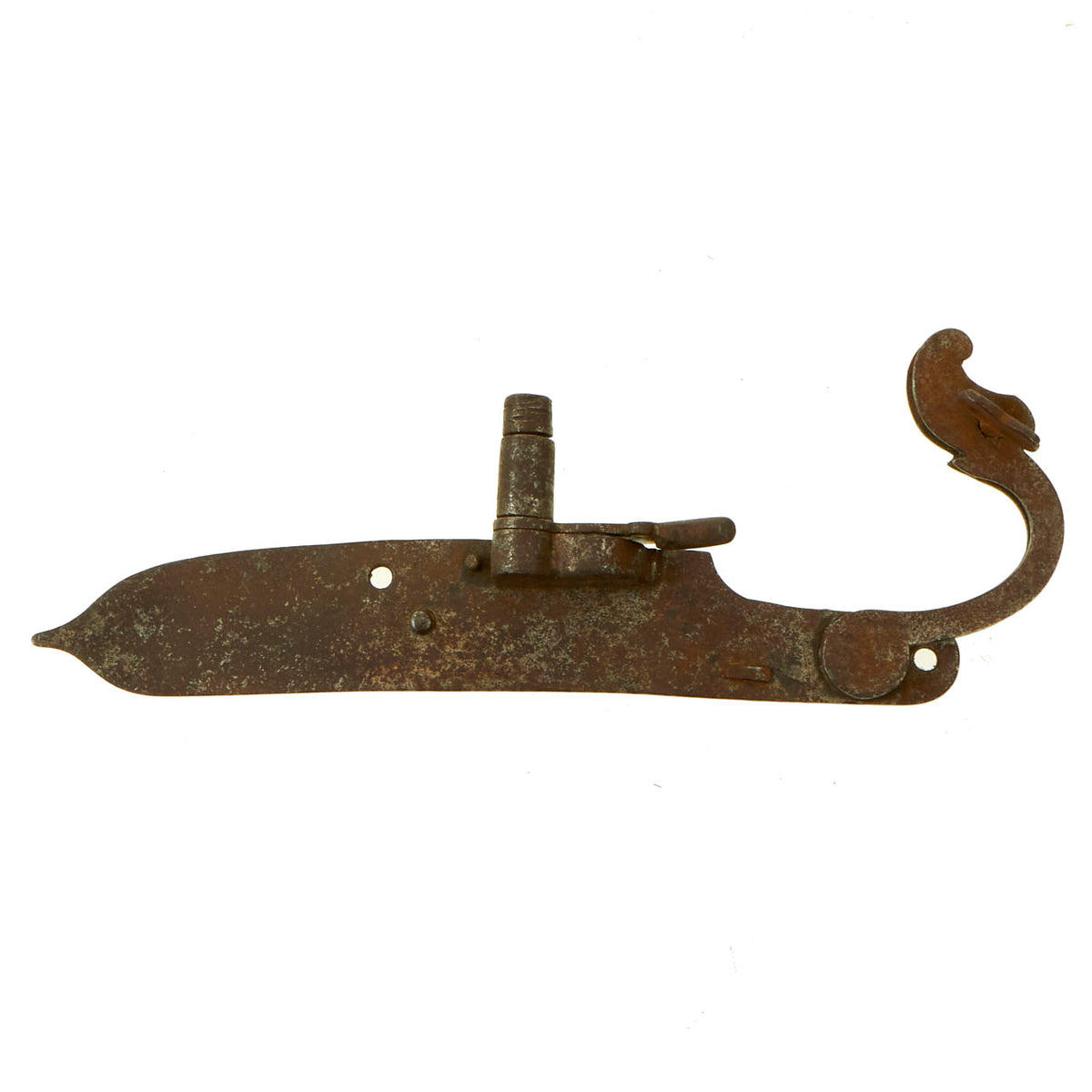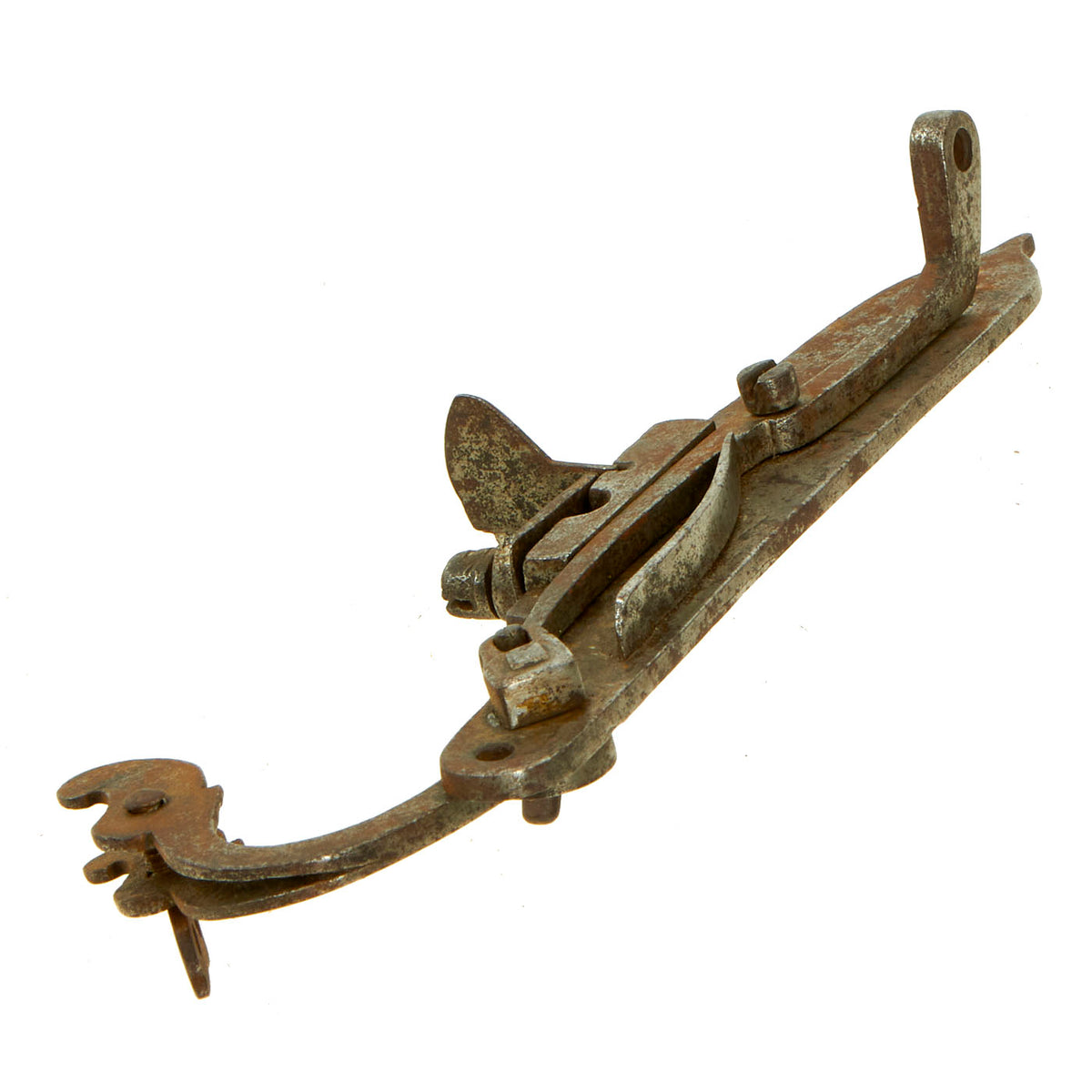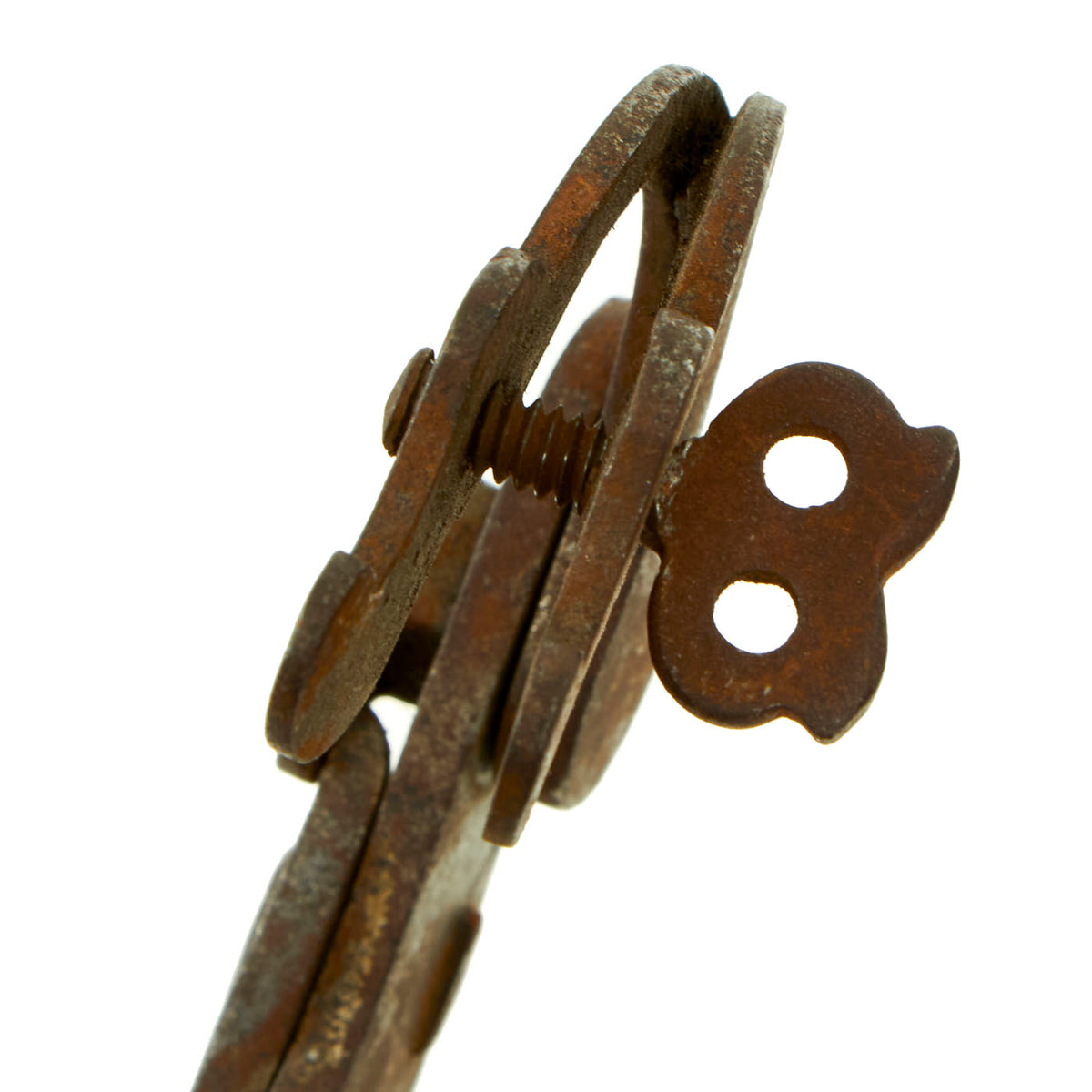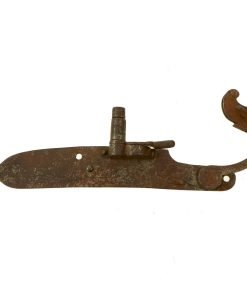Original English Detached Matchlock Ignition System with Pan Cover – 7 1/4″ Long Original Items
$ 395,00 $ 118,50
Original Item: Only One Available. Well this is certainly a “blast from the past”! Here we have a very nice English Matchlock ignition system, fitted with a very nice cover that both keeps the powder in and prevents an accidental discharge. The idea is simple: using a lit match, or wick, to ignite the powder in the pan and discharge the weapon. The lock serves to move a lever called the “serpentine” to the pan, which held the match. Some designs put this in front of the pan, while others had it behind, and all generally were spring loaded, without any cocking mechanism. It was discharged by pulling the trigger to move the lever. Unlike the later Wheellock and Snaphaunce designs, no flint was used, and the “match” or wick had to be kept lit if it was to be used.
The matchlock certainly had its drawbacks, mostly related to keeping the wick lit and ready to fire, as well as issues with the danger a lite wick caused during reloading. It was also not waterproof at all, and could be blown out by a strong wind. However at the time the low cost kept the Matchlock in service until a better system was designed, which ended up being the flintlock systems, a much better design than the Snaphaunce and Matchlock.
This example is the typical English style, with the serpentine at the front of the lock, and the actuating lever at the rear. The serpentine has a securing nut at the front, which allows it to securely hold onto the match. The lock plate measures about 7 1/4 inches long, and would have been held in place by two lock screws. While the firing system is totally different, the typical shape of the lock plate is very similar to the early flintlocks, even down to the location of the the lock plate screws. There is even a cover over the pan, to prevent the powder from spilling or being accidently set off.
Condition is very good, especially considering the age. It has a lovely aged patina on the metal, showing no major pitting or oxidation. Most likely this was a later production example, and may very well have been removed so that a flintlock could be fitted in its place. There was no easy way to convert the Matchlock to a Flintlock, so many locks were simply disposed of. This one somehow managed to survive.
Quite rare and full of research potential!
More on the Matchlock Ignition System:
A matchlock is a historical type of firearm wherein the gunpowder is ignited by a burning piece of rope that is touched to the gunpowder by a mechanism that the musketeer activates by pulling a lever or trigger with his finger. Before the invention of the matchlock mechanism, the musketeer or an assistant had to apply the match directly to gunpowder by hand, much like a cannon. The matchlock mechanism allowed the musketeer to apply the match himself without losing his concentration.
The classic matchlock gun held a burning slow match in a clamp at the end of a small curved lever known as the serpentine. Upon the pull of a lever (or in later models a trigger) protruding from the bottom of the gun and connected to the serpentine, the clamp dropped down, lowering the smoldering match into the flash pan and igniting the priming powder. The flash from the primer traveled through the touch hole igniting the main charge of propellant in the gun barrel. On release of the lever or trigger, the spring-loaded serpentine would move in reverse to clear the pan. For obvious safety reasons, the match would be removed before reloading of the gun. Both ends of the match were usually kept alight in case one end should be accidentally extinguished.
Earlier types had only an “S”-shaped serpentine pinned to the stock either behind or in front of the flash pan (the so-called “serpentine lock”), one end of which was manipulated to bring the match into the pan.
Most matchlock mechanisms mounted the serpentine forward of the flash pan. The serpentine dipped backward, toward the firer, to ignite the priming. This is the reverse of the familiar forward-dipping hammer of the flintlock and later firearms.
NOTE: International orders of antique firearms MUST be shipped using UPS WW Services (courier). USPS Priority Mail international will not accept these. International customers should always consult their country’s antique gun laws prior to ordering.
Fast Shipping with Professional Packaging
Thanks to our longstanding association with UPS FedEx DHL, and other major international carriers, we are able to provide a range of shipping options. Our warehouse staff is expertly trained and will wrap your products according to our exact and precise specifications. Prior to shipping, your goods will be thoroughly examined and securely secured. We ship to thousands clients each day across multiple countries. This shows how we're dedicated to be the largest retailer on the internet. Warehouses and distribution centres can be located throughout Europe as well as the USA.
Note: Orders with more than one item will be assigned a processing date depending on the item.
Before shipping before shipping, we'll conduct a thorough inspection of the items you have ordered. Today, the majority of orders will be delivered within 48 hours. The delivery time will be between 3-7 days.
Returns
The stock is dynamic and we cannot completely manage it because multiple stakeholders are involved, including our factory and warehouse. So the actual stock may alter at any time. It's possible that you may not receive your order once the order has been made.
Our policy is valid for a period of 30 days. If you don't receive the product within 30 days, we are not able to issue a refund or an exchange.
You can only return an item if it is unused and in the same state as the day you received it. You must have the item in its original packaging.
Related products
Uncategorized
Uncategorized
Uncategorized
Armored Burgonet Helmet & Polearm from Scottish Castle Leith Hall Circa 1700 Original Items
Uncategorized
Uncategorized
Uncategorized
Armoured Fighting Vehicles of the World: AFVs of World War One (Hardcover Book) New Made Items
Uncategorized
Uncategorized
Uncategorized
Uncategorized
Australian WWII Owen MK1 Machine Carbine SMG Custom Fabricated Replica with Sling Original Items
Uncategorized
Uncategorized
Uncategorized
Uncategorized
Uncategorized












































































